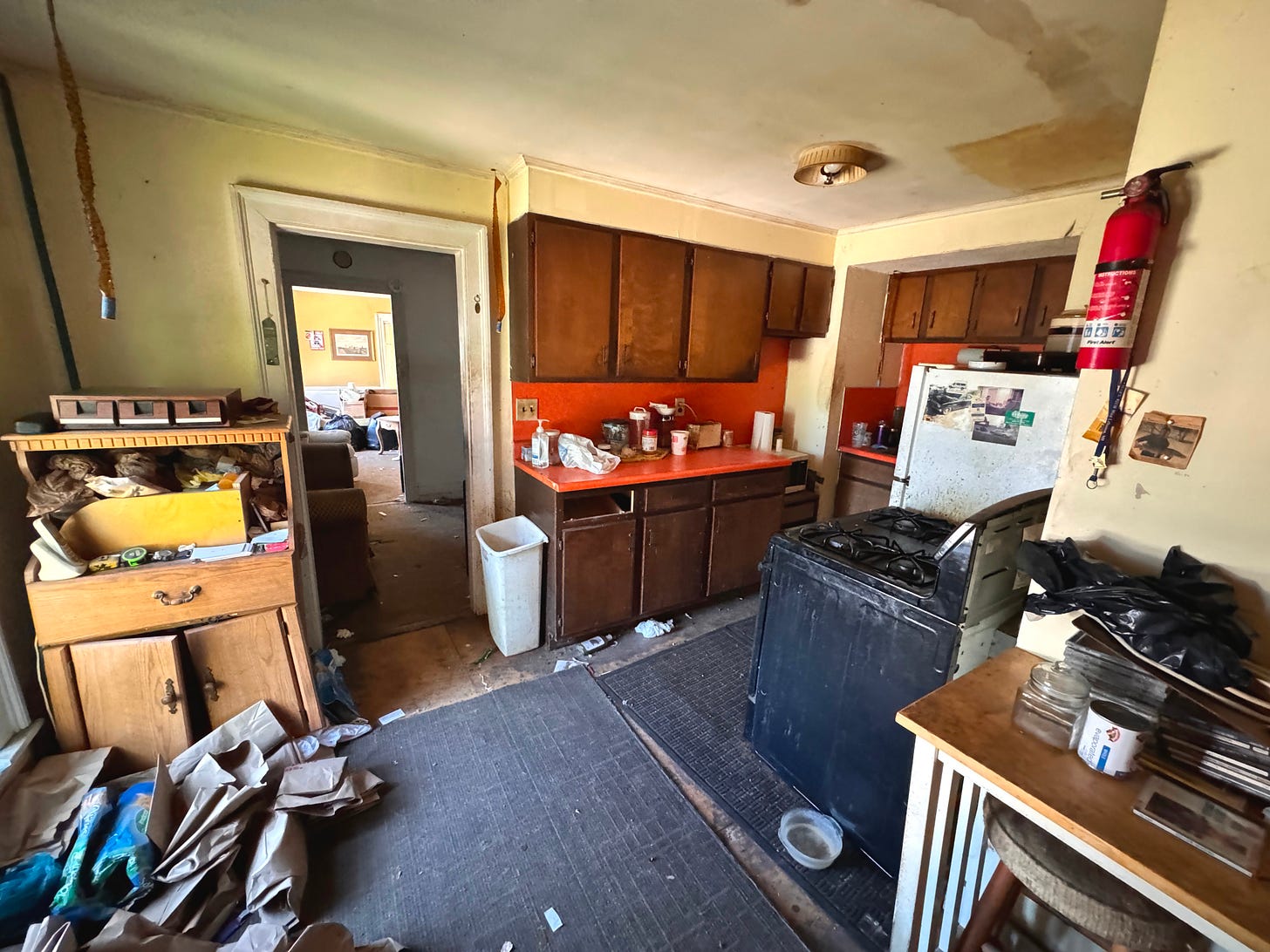I Bought A 4-Plex For $60,000. Now What?
Planning the $1,100,000 restoration of a historic 1836 apartment building in downtown Bradford, VT.
Hey — Jonah here.
Welcome back to Brick + Mortar, where I share stories on developing real estate at Village Ventures in rural Vermont.
I picked up this quadplex last year for $60,000.
$60,000?!
Not a bad price for a beautiful (in my eyes), historic building built in 1836 in a good location downtown.
But, as always, there were a few catches:
The building had been neglected for decades and had massive deferred maintenance
The state fire marshal and building inspector cited the previous owner 20+ violations, with issues including a red-tagged boiler system, lack of egress, no fire separation between units, and unsafe wiring
Tenants occupied the building, and violations couldn’t be addressed until apartments were vacated
Heaps and heaps of trash and junk littered the grounds, basement, and barn (more on that below)
It was a headache for the previous owner, and he just didn’t want to deal with it.
But me? I love headaches. So I told him I’d take over his mess, and we hammered out a deal that made sense.
State of affairs
The previous owner had kicked the can on the building code violations for almost a year, and the Department of Fire Safety had had enough.
So, the first step was to deal with the fire marshal’s ultimatum: Either get the tenants out of this unsafe building or immediately address the violations.
A bit of a loaded ultimatum, though, since the violations were too severe to address in an occupied building.
Desperate times call for desperate measures so I stuffed cash in envelops and offered it to tenants in exchange for their keys within two weeks. And it worked!
All but the downstairs tenant left, who were allowed to stay temporarily as long as the other units remained vacant.
Great.
First problem solved.
We can now get inside and take a look at what we’re working with 😫.
Holy f*&#.
These were taken the day after move-out in one of the apartments.
I’ve seen some nasty living spaces, but this one takes the cake (and smears it all over the walls before letting it rot). That bathroom leaves nothing for the imagination.
I still occasionally get flashbacks to the stench permeating that apartment and it ruins my day.
We’ve certainly got our work cut out for us.
Our plan for the building
Initially, I wanted to gut the building down to the studs. But we eventually skinnied down the scope for two reasons:
Gutting is EXPENSIVE. I learned some hard lessons at our 6-unit affordable housing project around the corner last year
We’re applying for federal historic tax credits and the National Park Service has strict guidelines on what can be removed
Instead, we’ll be more selective:
Plaster, trim, doors, and windows will be restored. Walls and ceilings will get a skim coat of plaster to freshen them up
Plumbing, electrical, and HVAC (boiler system) will be fully replaced. Chase ways will be cut in plaster to allow for re-wiring and plumbing
Vinyl siding will be stripped, allowing us to restore the original clapboard siding
Minor changes to interior space (another restriction from the Park Service)
Blown-in cellulose will be added to walls and attic. Basement will be spray foamed
New roof, kitchens, bathrooms, and landscaping
In total, we’re looking at around $1,000,000 in construction costs plus another $100,000 in soft costs.
Here’s how our (anticipated) funding sources break down:
The goal by the end of the project is to have four fully restored apartments (one 3BR, two 2BRs, and one 1BR) with rents targeting 80-120% AMI.
Getting to construction
At the moment, we’re deep into funding conversations with the hopes of starting construction later this fall.
The next two months will be critical, and we’ll know by August whether we’re funded.
In the meantime over the past few weeks, we hauled nine 30-yard dumpsters worth of trash out of the property, and that doesn’t include anything inside the apartments. Plus three full of scrap metal, a camper, and a half-buried car under the barn.
It’s crazy to see decades worth of crap piled up.
And even crazier spending $20,000 to get rid of it all.
Until next time.
— Jonah 🧱
P.S. Want to connect? Find me on LinkedIn.













Jonah, you and your crew are unstoppable! Can't wait to see what you do with this.
Seeing and reading about the kind of effort you're making and the work your crew is doing brings out the best in all of us. If your crew can do it we can, at the very least, try the same in our own areas.